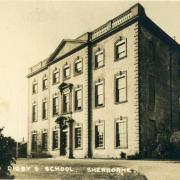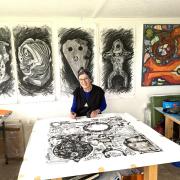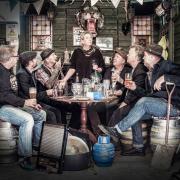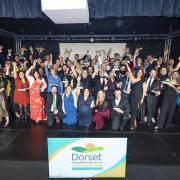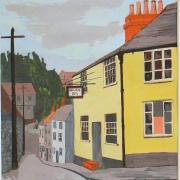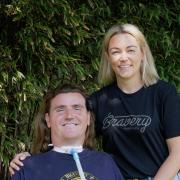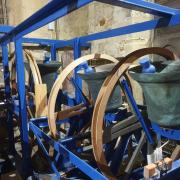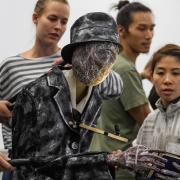From documenting The Beatles for Life magazine to covering some of Africa’s bloodiest conflicts, Terry Spencer was an exceptional photographer with a remarkable career as Jeremy Miles discovers

Wartime fighter pilot Terry Spencer led a charmed life. Shot down twice, he survived against the odds. He even has a mention in the Guinness Book of Records for making the lowest successful parachute jump ever.
Bailing out of a Spitfire engulfed in flames at just 34 feet would normally end in certain death. Not for the apparently indestructible Terry Spencer though.
An enemy explosion blasted his ‘chute out of its pack at the crucial moment and gave him enough updraft to make a reasonably gentle landing in the sea below.
He was something of an RAF legend, a daring young Squadron Leader who excelled at low level strafing raids and specialised in taking out the Germans’ deadly V1 flying bombs or doodlebugs as they were known. He clocked up a record series of eight V1 kills and once even tipped a bomb out of the sky with a flip of his wingtip.
Needless to say at the end of the war ‘Tip ‘em up Terry’ as he was known needed another adventure. A series of happy accidents led to a new career as a photographer for Life magazine. It also found him marrying beautiful stage and screen actress Lesley Brook. Life magazine kept him busy covering the bloody independence struggles across Africa while he and Lesley raised a family.
Working for Life magazine also led to a surprising change of direction when, in 1963, Terry returned to England and was asked to document an exciting new pop group that were causing a sensation across the UK and beginning to make waves on the other side of the Atlantic too.
The first time Terry Spencer clapped eyes on The Beatles was right here in Dorset at the Bournemouth Winter Gardens. He was astounded by the scenes that greeted him - screaming, fainting fans and the sheer energy of the group on stage.
For Terry the world of celebrity photography provided a respite from years of covering wars and human misery. He was a natural and photographed everyone from Princess Grace to Ava Gardner, Bob Dylan to Robert Plant, Princess Diana to Louis Armstrong. His huge personal photo archive would eventually contain tens of thousands of shots of wars in the Congo, Vietnam and the Middle East as well as a dizzying array of musicians, actors, actresses and politicians.
Now an exhibition of Terry Spencer’s photographs has gone on show at Bournemouth Library. Called Living Dangerously, a title it shares with a double autobiography he penned with his wife Lesley in 2002, it is being staged by his daughter Cara with 20 per cent of all proceeds going to the East African Famine Relief Appeal. It’s a cause that Terry, who died aged 90 in 2009, just 24 hours after the death of his beloved wife of 62 years, would approve of.

The time that he and Lesley spent in Africa left him wearied by the hunger, corruption and brutal political regimes that blighted the dark continent. In many ways he had seen too much.
Sitting in her flat on Bournemouth’s West Cliff, Cara remembers her father as loving and supportive but rarely prepared to show his emotions.
“He was very old school, very stiff upper lip but then he’d seen some dreadful things - the Sharpeville massacre, the Mau Mau uprising. He’d witnessed nuns being raped in the Congo and scenes so unimaginably horrible that he later said they made Vietnam look like a playground.
“It undoubtedly affected him. I remember we took him to see The Godfather and he got up half way through and said ‘Don’t ever take me to a film like that again’. He wouldn’t even watch cowboy movies because for him violence was a reality and not an amusement.”
Despite the horrors he had witnessed Terry always said that he had been lucky to arrive in Africa in time for the independence struggles. It was perhaps lucky too that he arrived back in the UK just as the sixties started swinging.
Photographing The Beatles was originally suggested by the then 13-year-old Cara. She told her dad that there was a “fab new group” that he really should cover for his magazine. Terry was singular unimpressed but over in America a senior editor at Life was driving through New York when The Beatles came on the radio. He also had a 13-year-old daughter who was sitting in the passenger seat and started raving about this bunch of mop top musicians from somewhere called Liverpool.
An executive editorial meeting was called and Terry was dispatched to follow the ‘fabs’ around the UK. He was given the kind of access that would never be possible again and by the time he had completed the assignment he had 5,000 pictures of The Beatles on the road to unimaginable fame. Many were later used in a glossy Beatle photobook called It Was Thirty Years Ago Today.
Even though he was well into his forties, a proper grown-up and a former World War II Squadron Leader, he liked The Beatles and got on particularly well with Ringo who was a keen photographer. “He got dad to show him some camera techniques,” recalls Cara.
The following year Terry’s friendship with the band led to a shoot on the set of their debut film A Hard Day’s Night and this time Cara got to live the teenage dream when she was invited along to help carry his cameras

“It was fantastic,” she remembers. “The Beatles were great, and dad even persuaded them to make a tape specially for me. It was of them joking and larking about and being a bit rude. I played that tape endlessly. It made me hugely popular at school. Sadly it got accidentally wiped. I was completely distraught when that happened.”
Cara says Paul was her favourite Beatle. She even had a hamster called Paul McCartney. “The sixties were such a good time and I think that for dad it was great relief to see young people blossoming and doing something creative. He loved peace and happiness.”




